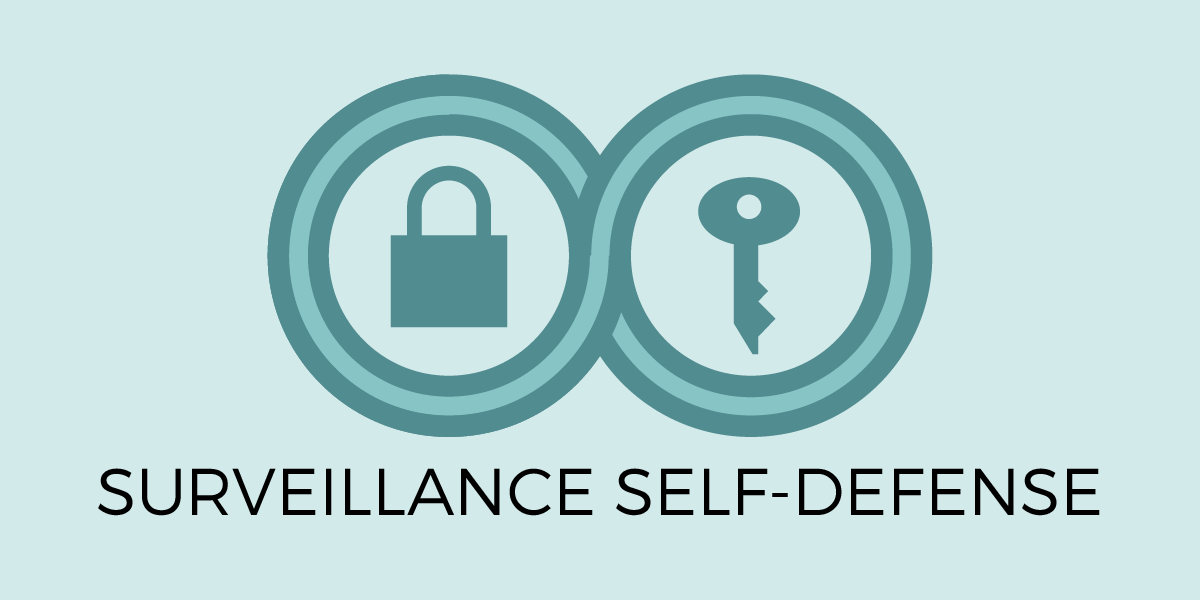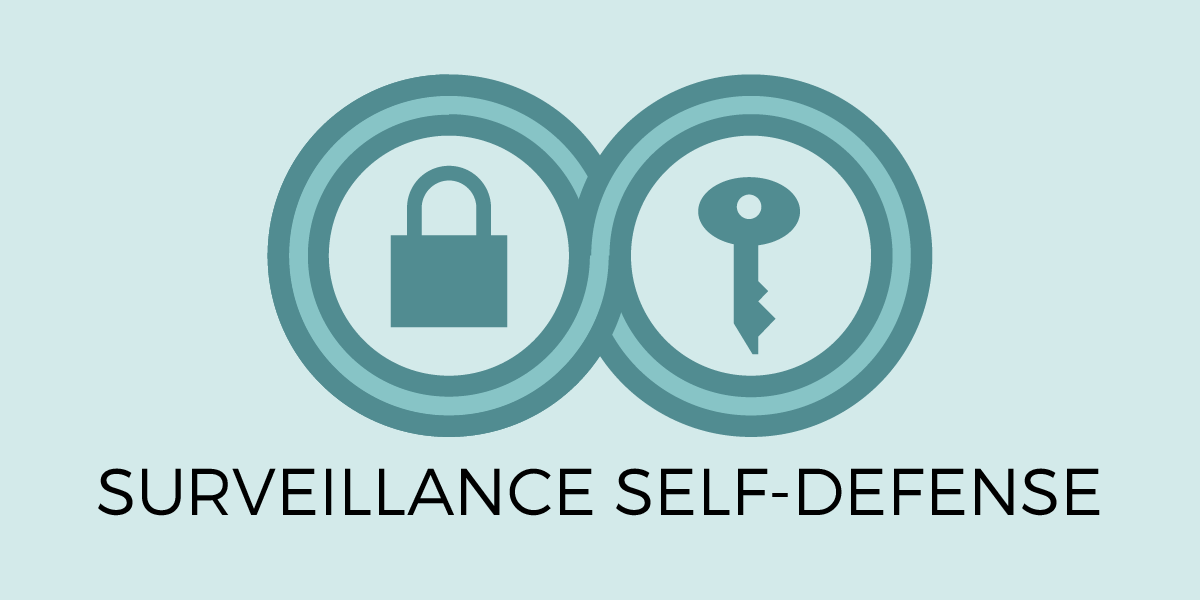Here at EFF, we maintain a repository of self-help resources on circumventing surveillance across a variety of different platforms, devices, and threat models. We call it Surveillance Self-Defense, or SSD for short.
SSD covers myriad topics, and is broken up into four main sections:
- Basics: Overviews on what digital surveillance is and how you can fight it. And if you don’t understand a term being used, there’s an extensive glossary at your disposal.
- Tool Guides: Step-by-step tutorials on installing and using privacy and security tools.
- Further Learning: Deep-dives on the theory behind protecting your digital privacy and common ways to apply it.
- Security Scenarios: Playlists of our resources for specific use cases, such as LGBTQ youth, journalists, activists, and more.
Things to Note About SSD
Always. Be. Updating.
SSD is audited and updated on a rolling basis, as new information comes to light or instructions are no longer relevant or useful. Our team of security and surveillance experts review each piece to make sure we’re giving you the most up-to-date information we’re able. Each guide has a “Last reviewed” date at the beginning that lets you know how recently that guide was evaluated, so you can make informed choices about your digital security.
Security speaks more than one language
This resource is translated from English in whole or in part into 10 languages: Amharic, Arabic, Spanish, French, Russian, Turkish, Vietnamese, Brazilian Portuguese, Thai, and Urdu (as well as additional, externally-hosted community translations in Indonesian Bahasa, Burmese, Traditional Chinese, Igbo, Khmer, Swahili, Yoruba, and Twi.
Note: Since the English language site is the source material, it’s important to compare the “Last reviewed” date at the beginning of each translated guide to the English version for the most up-to-date version.
Major Updates this Year
Facebook Groups: Reducing Risks
One major change in Facebook’s groups’ settings was a change in visibility—group administrators no longer have the option to choose secret, private, or public groups. Instead, when administrators create a group, they can choose between only two privacy settings: private or public. In addition to choosing between public and private, they can also choose between “hidden in search” and “visible in search”—in other words, whether or not the group will turn up if someone searches for it or related topics on Facebook. In our guide on reducing risks, we detail the things to consider when creating, joining, or administering a Facebook group for a sensitive topic or vulnerable community.
How to: Use Tor on macOS, Windows, and Linux
Our set of guides for using the Tor browser on macOS, Windows, and Linux were given a major overhaul to account for the brand new UI/UX that Tor rolled out earlier this year. The tutorials on installing and using Tor across these three operating systems have been updated with fresh screenshots for each step of the installation process. As with all our tool guides, we link directly to the official download site so you can trust that you’re getting an authentic copy of the software over a secure connection.
Choosing the VPN That’s Right for You
Our guide to choosing a VPN has been expanded to provide explanations in greater depth on how VPNs work, what they do, and what they don’t do. We also cover considerations for evaluating which VPN is right for you, and how those considerations can be affected by location, law, and the needs you may have around data collection, privacy, and security.
Key Verification
Our guide on key verification when using end-to-end encryption has been massively expanded, updated, and now includes graphics. These visual explainers help break down the concepts, risks, and associated strategies for mitigating those risks when verifying keys. New guide sections include the various ways to verify keys out of band, and verification aids such as keyservers.
Attending Protests
Our guide on attending protests has been streamlined to apply to a wider international audience, with some specific information relevant to protesting in the United States. We discuss best practices for encrypting your devices and protecting your data, installation of the end-to-end encrypted messenger Signal, the disabling of biometric unlock functions for your devices, and considerations for photo metadata and device confiscation.
Check out the rest of Surveillance Self-Defense to learn more about protecting yourself online. And if you’re interested in helping your friends and neighbors understand digital security, our sister resource, Security Education Companion (SEC), is full of lessons and educational materials at the beginner and intermediate levels of learning.
This article is part of our Year in Review series. Read other articles about the fight for digital rights in 2019.
Like what you're reading? Support digital freedom defense today!










